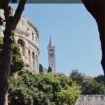
Go World Travel is reader-supported and may earn a commission from purchases made through links in this piece.
Pula, Croatia overlooks the Adriatic Sea from the southern tip of the Istrian peninsula. It is the largest city and also the capital of this area. Aside from tourism, it is also dependent on shipbuilding, fishing, and winemaking.
With more than three millennia of existence behind it, it is home to many ancient Roman buildings. Walking through its streets is like stepping into a museum. With every step, you can imagine what life was like in Pula centuries ago. Then it was a port coveted by the most important empires of the world.
Since the time of the Roman Empire, this city has been a very important place to be. The first person to start building the city was Emperor Augustus. However, it was the Venetians and Austro-Hungarians who gave it the rich history it has today.
When night falls, Pula acquires special magic and its monuments are filled with dim lights. It is a quiet city, except for the most touristic months of summer, when its beautiful terraces are full of life.
Things to Do in Pula
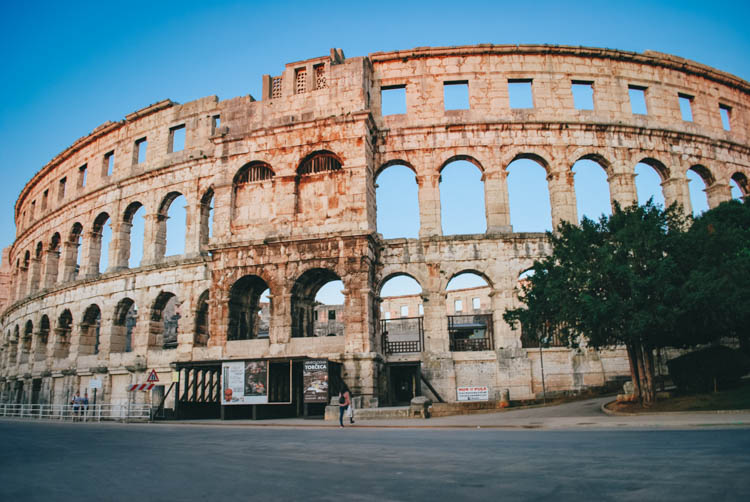
Visit the Amphitheatre: The Symbol of the City
The real gem of Pula is the Amphitheatre. There is no other monument in the city that surpasses it in beauty and magnificence. It is one of the largest and best-preserved Roman amphitheaters in the world and a symbol of the city.
It was built in the 1st century in the center of the city following the canons of the Colosseum of Rome. Its walls span 32 meters and are formed by seventy-two arches.
Planning a last-minute trip to Croatia?
Top Experiences and Tours in Croatia:
- See the sights with a tour of Montenegro Full-Day Trip from Dubrovnik
- See nature with Plitvice Lakes and Rastoke, Small Group Tour from Zagreb
- Explore more with From Hvar: Vis Island and Blue Cave Speedboat Tour
Where to stay in Croatia:
- Find accommodation with Booking.com
- Get a rail pass through Rail Europe
- Find Bus, Train, and Flight tickets with one search through Omio
In the past, as many as twenty thousand spectators came to the amphitheater to watch gladiatorial competitions and tournaments. Today, its use is quite different, as it hosts concerts and shows such as the Pula Film Festival, the most important in the country.
You can visit its interior and discover its subway passages used by the fighters to move around for a fee. Now in this spot, different crops of grapes and olives are exhibited and their production is explained. These are two very important products in the region and sources of wealth since ancient times.
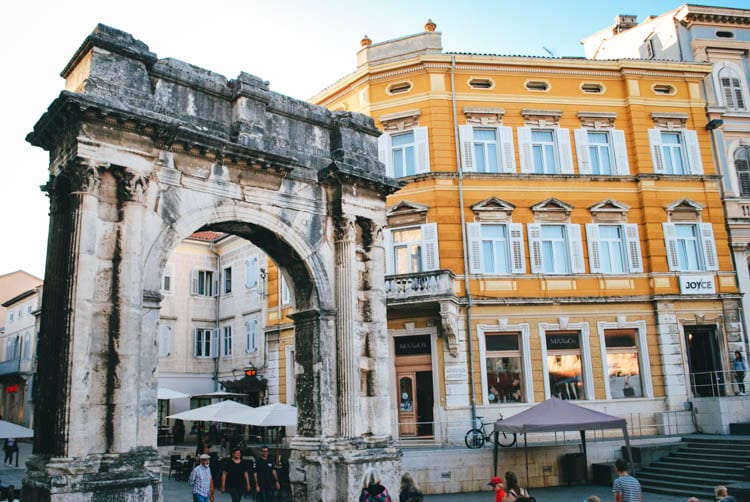
Crossing Arch of the Sergii
Another of the pearls of the Roman legacy is the Arch of the Sergii. This triumphal arch, despite dating from 30 BC, is in perfect condition.
It is of Corinthian style strongly influenced by the Hellenistic. Crossing this arch, we find the main street of the historic center that leads to the Roman forum, full of stores and bars.
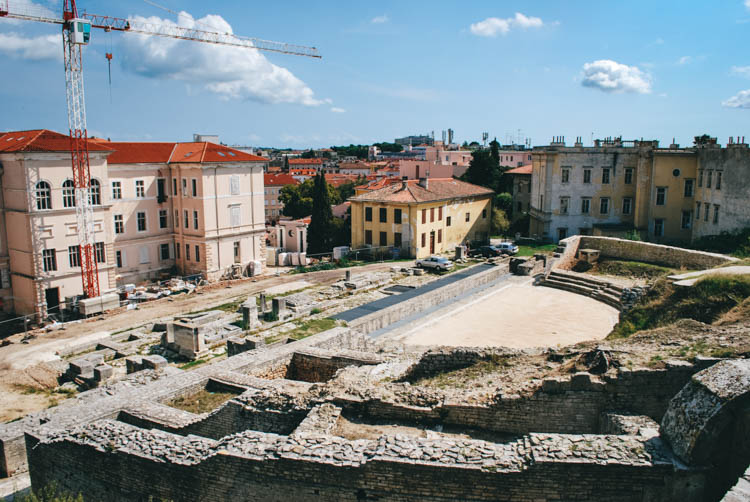
Discover the Roman Forum
The Roman Forum of Pula maintains the grandiose aura of Augustan times. This was the center of city life during Roman times and is still the heart of Pula today.
People now gather here for concerts, open-air performances or to watch an important soccer match on a giant screen. The inhabitants of Pula still congregate in the same place they did 2000 years ago.
Its main buildings such as the Temple of Augustus and the Pula Communal Palace, are still in perfect condition. But the Augustus temple is not the original one because it was destroyed by bombs during World War II. However, mosaics and pieces of the original were included in its reconstruction.
As for the Communal Palace, it had its origin in a temple dedicated to the Roman goddess Diana. The present building was erected in the Middle Ages, in the 13th century, but some remains of the original Roman temple can still be seen. Today it houses the town hall.
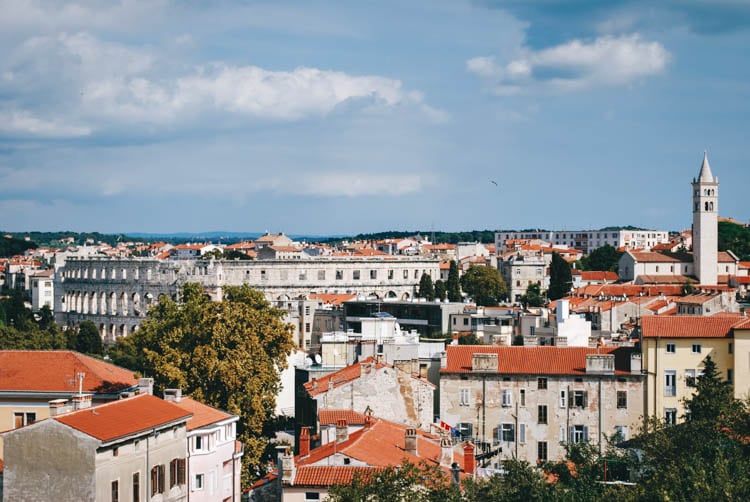
Stroll Through the Kastel Fortress
This star-shaped fortress was erected by the Venetians in the 17th century to protect their main Adriatic port. It is another symbolic place in the city and is located on the highest hill of Pula.
Walking along its walls we discover watchtowers alternating with cannons. It is in a good state of preservation and is currently the seat of the Historical Museum of Istria.
On the same hill where the castle stands are also the remains of a Roman theater and another great museum: the Archaeological Museum of Istria.
In the surroundings of the city, there are 26 other Austro-Hungarian defensive fortresses, such as Punta Christo.
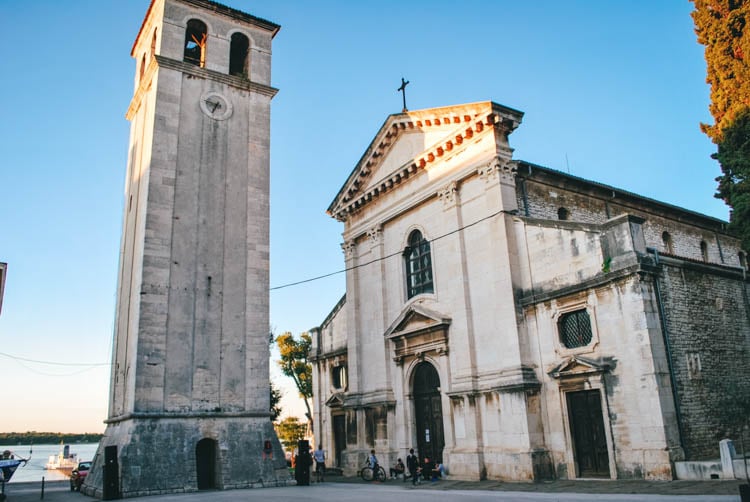
Visit the Cathedral
Walking along the popular and ancient Kandlerova street we find ourselves in front of the Cathedral of the Assumption of the Blessed Virgin Mary.
Its construction dates to the fifth century, although it was rebuilt in the 17th century and few original elements remain. The cathedral was built in the Renaissance style, but its bell tower is baroque.
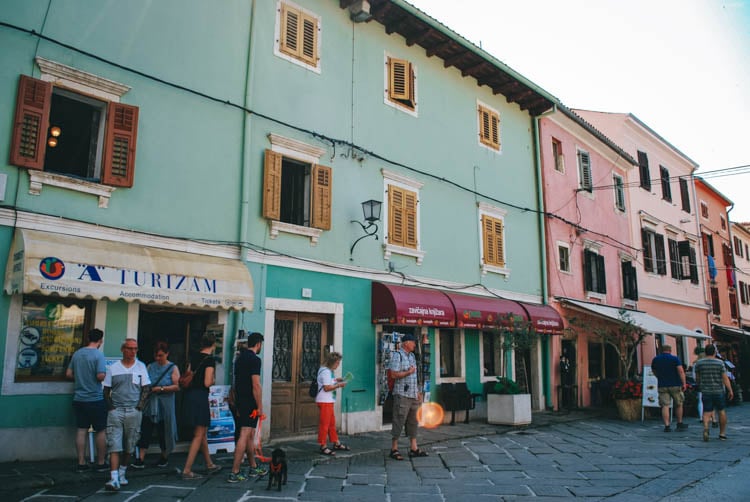
Soak Up the Local Life at the Market
The Pula market is the perfect place to enjoy the local gastronomy and buy some of the products of the Istrian Peninsula. This market consists of a main building where the fish, seafood and meat stalls are located, while the fruit and vegetables are sold outside.
In addition, on the second floor, there are some restaurants where you can taste typical Istrian products such as olive oil, wine, cheese or truffle.
Very close to the market, there is also a restaurant area with traditional and quality food that stands out.

Travel Back to World War I in Zerostrasse
Pula was surrounded by a wall with several gates until the 19th century when it was destroyed to facilitate the expansion of the city. However, a section of it remains, the one that went from the Twin Gates to Giardini square.
The Twin Gates are two identical arches, hence their name. These gates provide access to a network of subway passages and galleries known as Zerostrasse. They extend under the hill of Pula and run for hundreds of meters.
They were excavated during the Austro-Hungarian domination. During the air raids of World War I, they were used as a shelter that could hold up to 50,000 people. Today it houses an exhibition that recalls those tragic years.
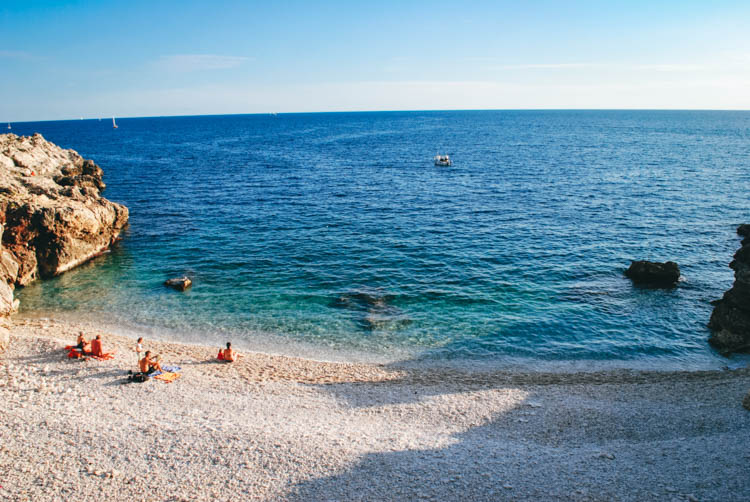
Have a Swim at the Surrounding Beaches
In addition to its rich history, Pula is also known for its many beaches, which are spread out along its long, rough coast. It is also known for its mild climate and crystal-clear waters. These beaches are made of small rocks instead of sand, so your suitcase should never be without a pair of booties.
Some of the most beautiful beaches of Pula are quite close to the city center. These are Lungomare and Hawaii Beach. Galebove Stijene is another place not to be missed, especially known for its huge rocks, from which people jump into the sea on summer days.
If you go
Museums and galleries Archives – Tourism Office Pula (pulainfo.hr)
Author Bio: Based in France, Lucia Otero Medraño is Spanish with a master’s degree in travel journalism. She has worked in the tourism sector but her true passion is to live enriching experiences and discover amazing places around the world and write about them. In her spare time, she likes to enjoy her second passion, music.

